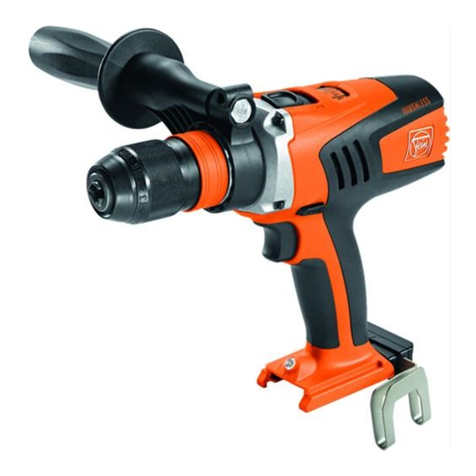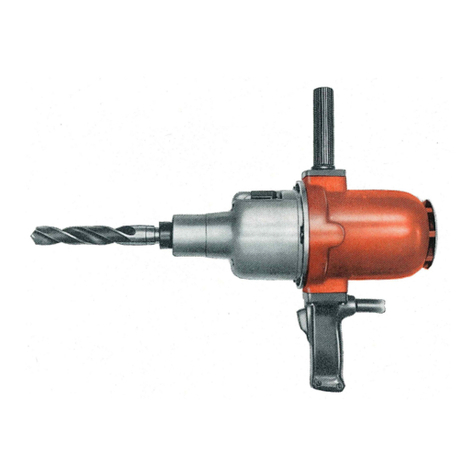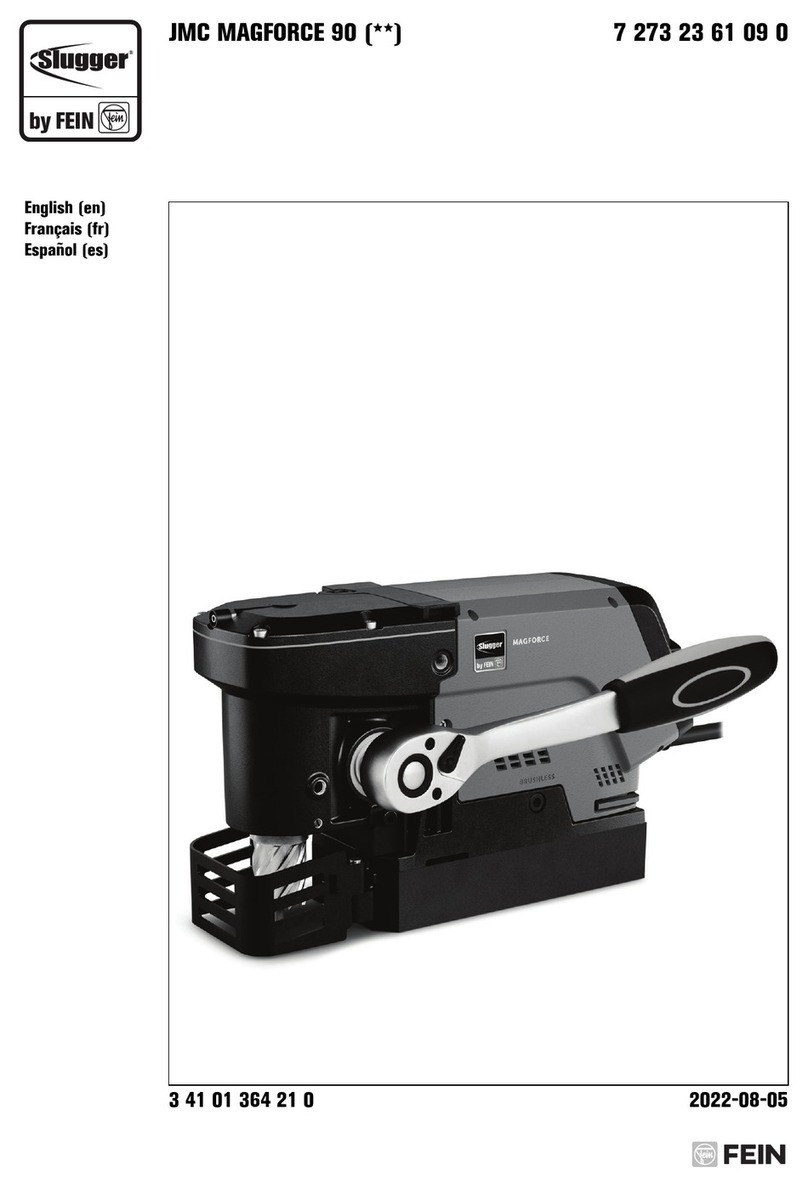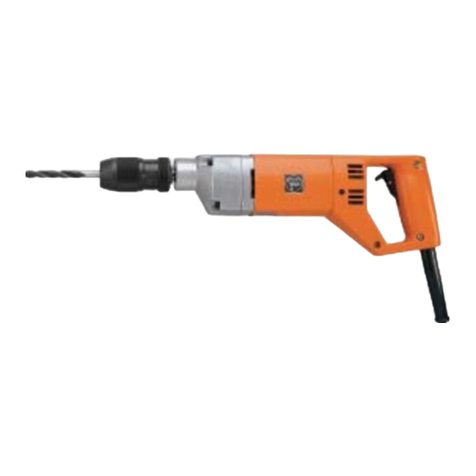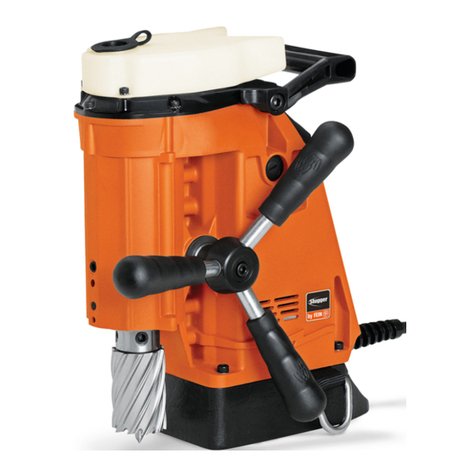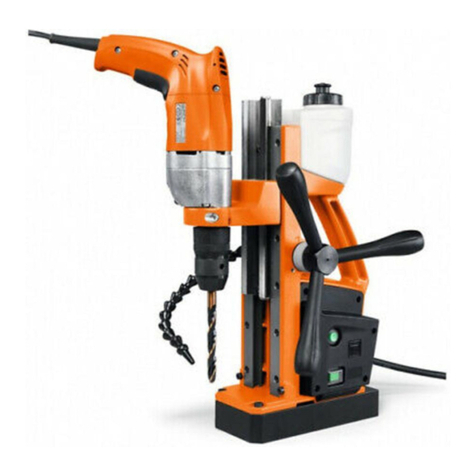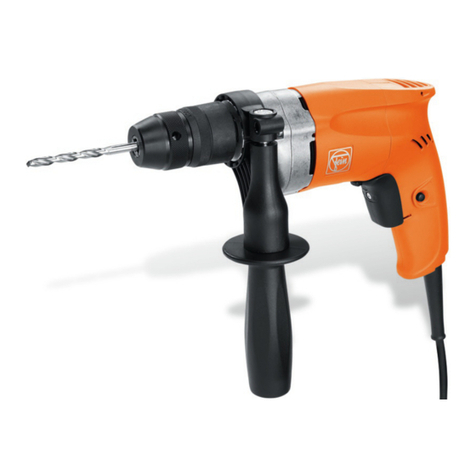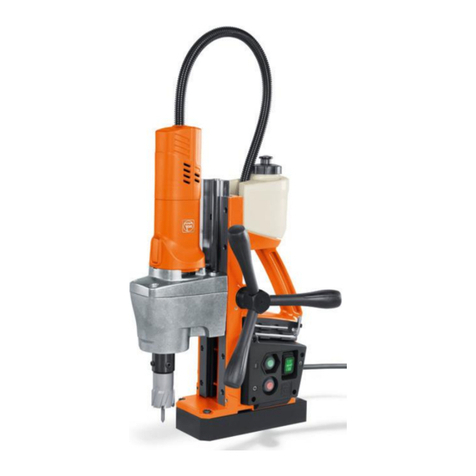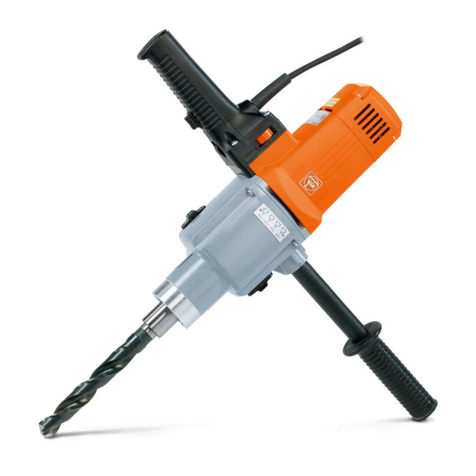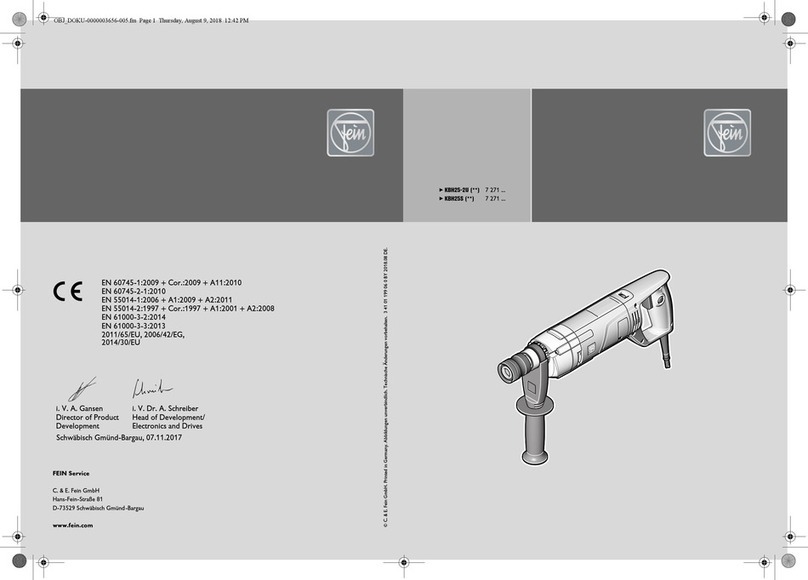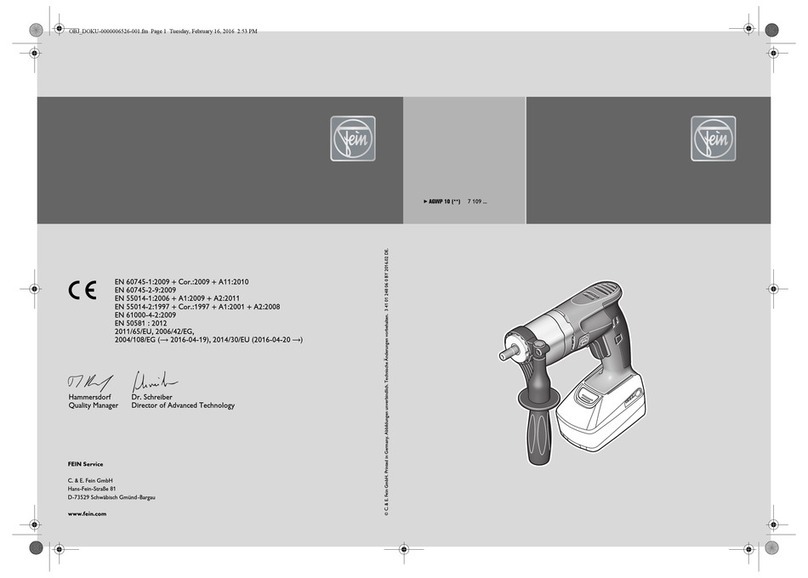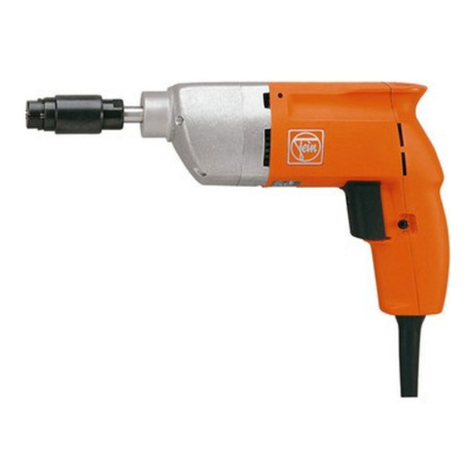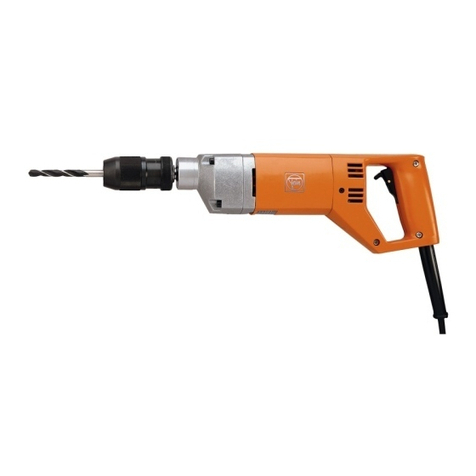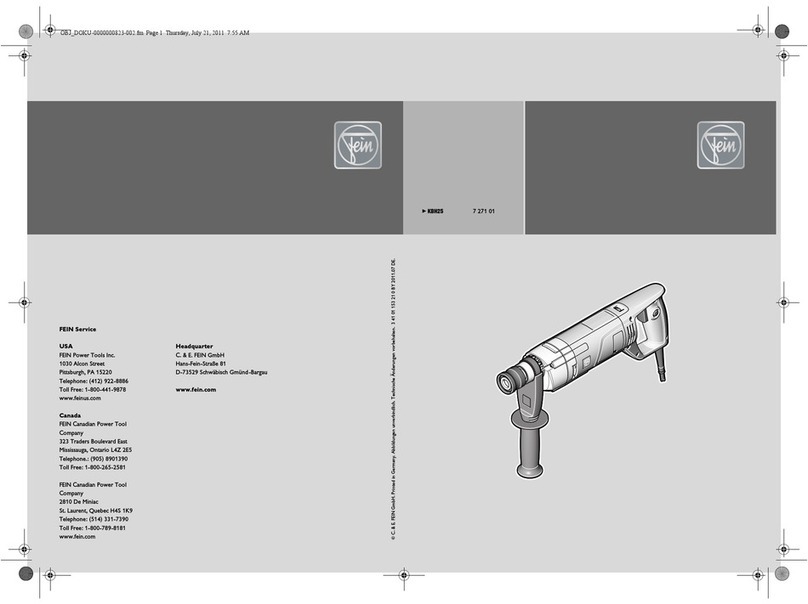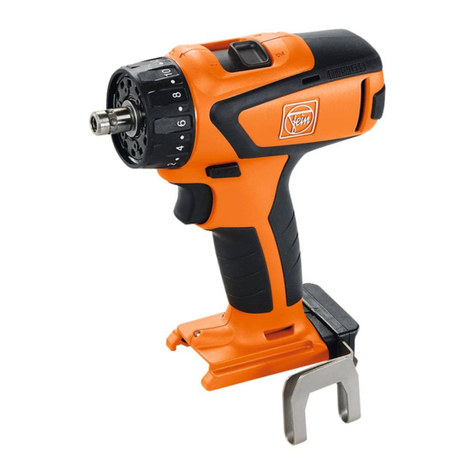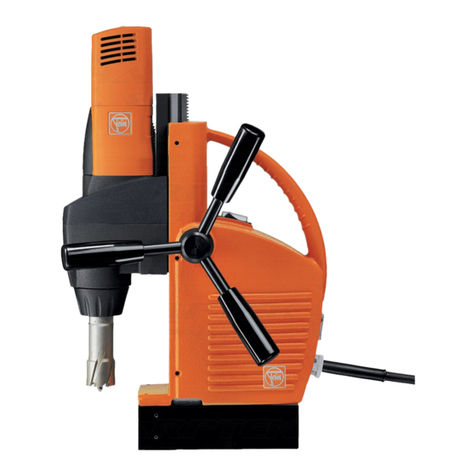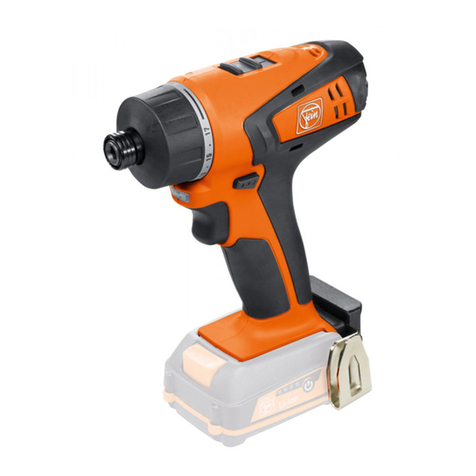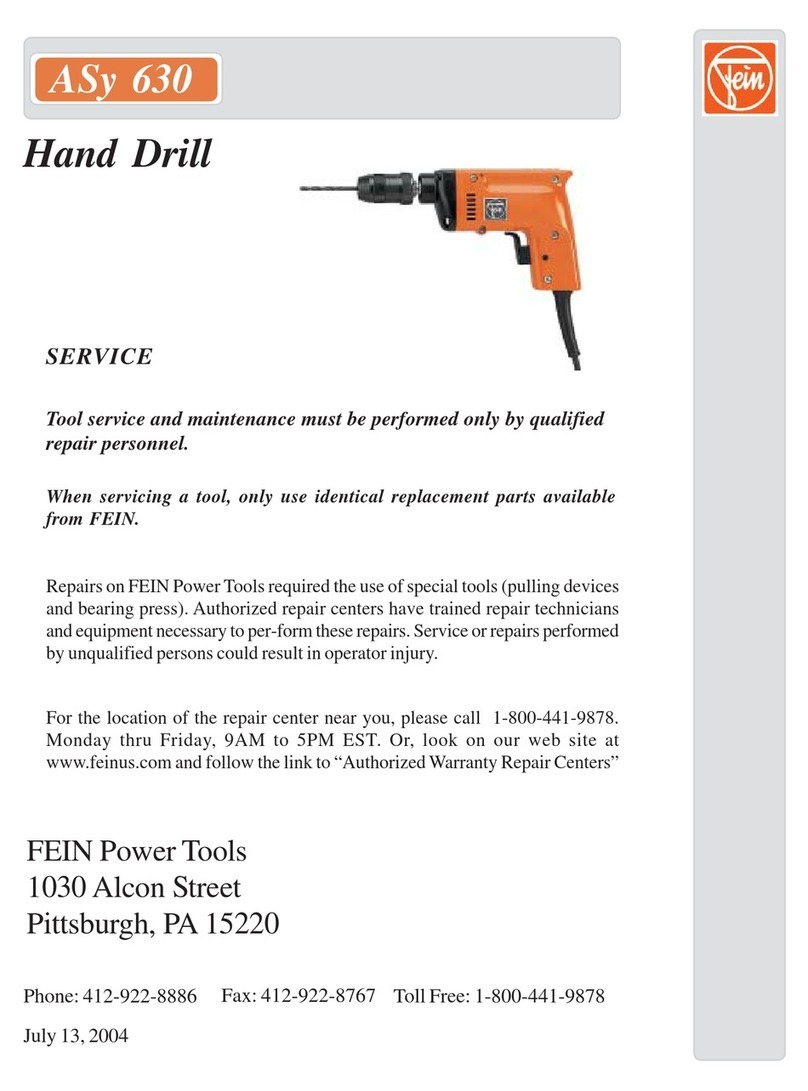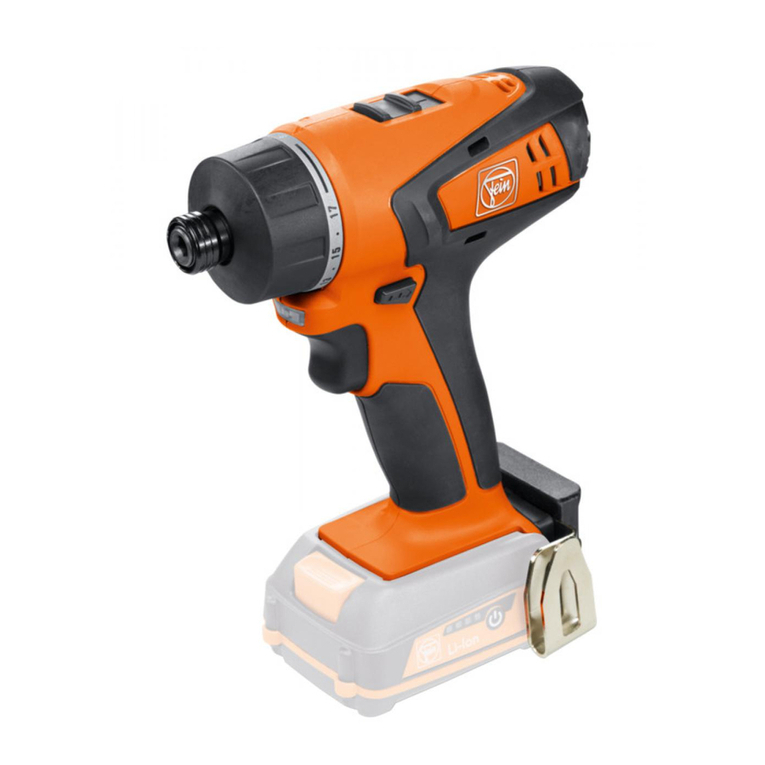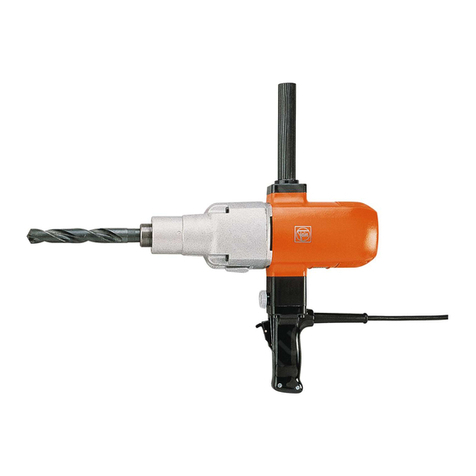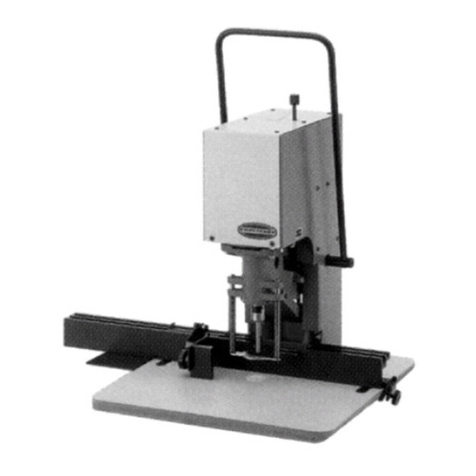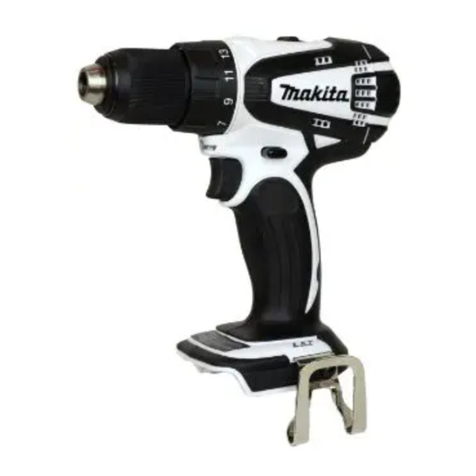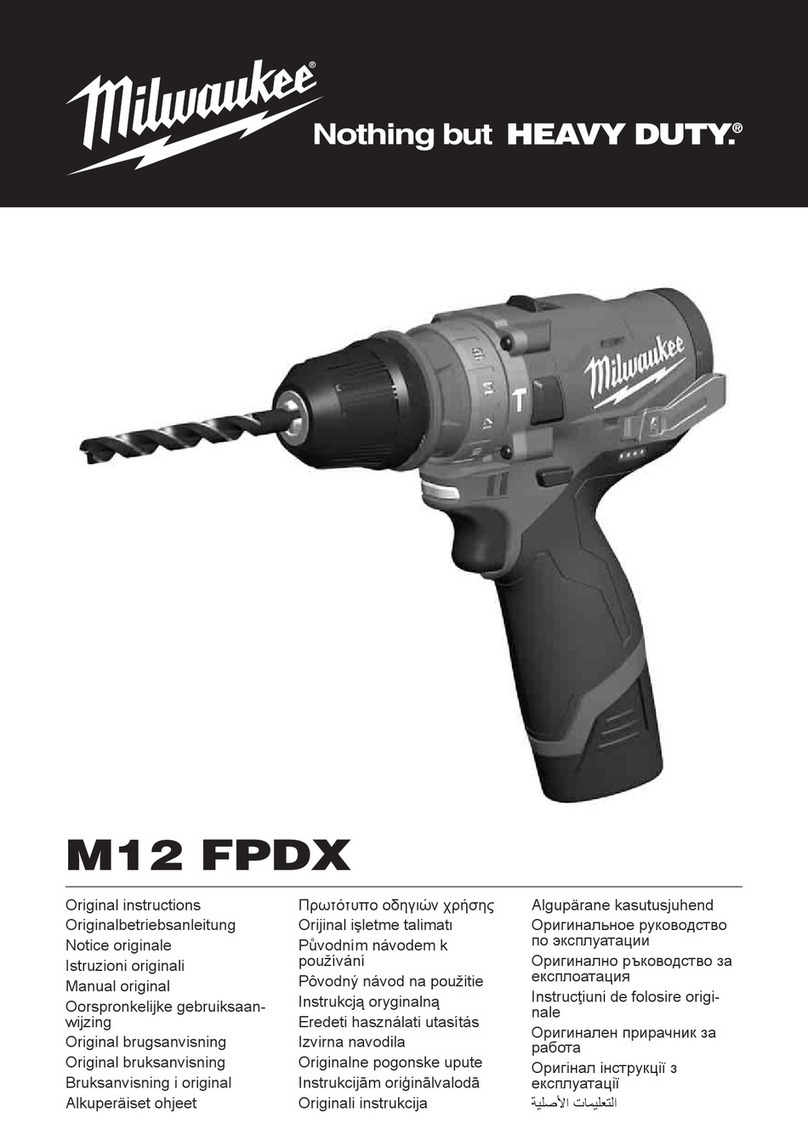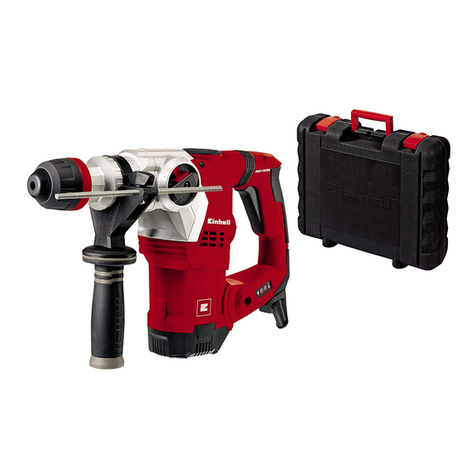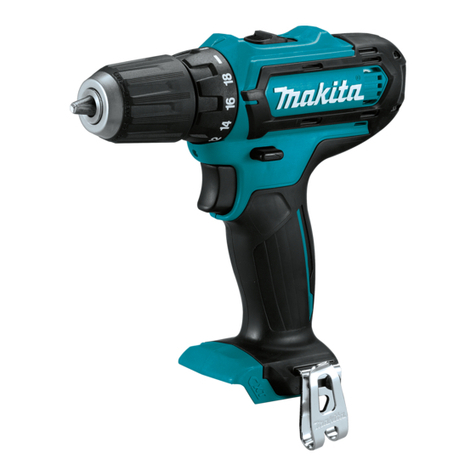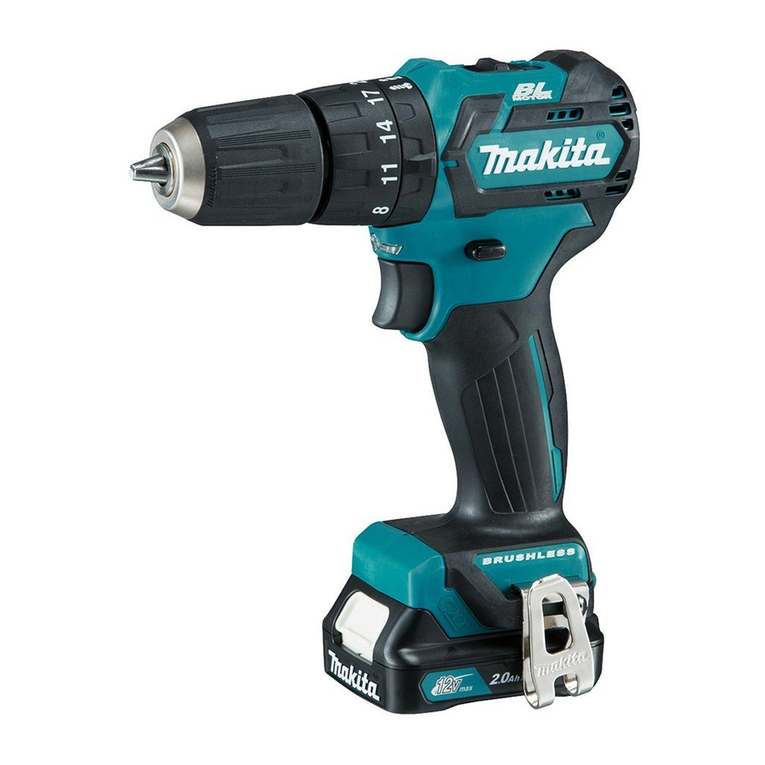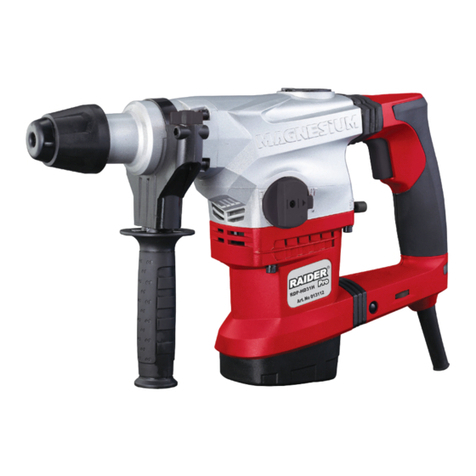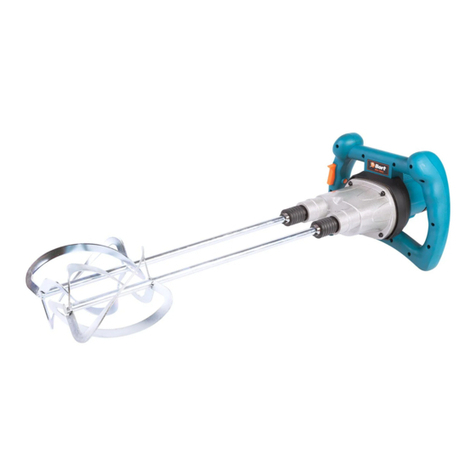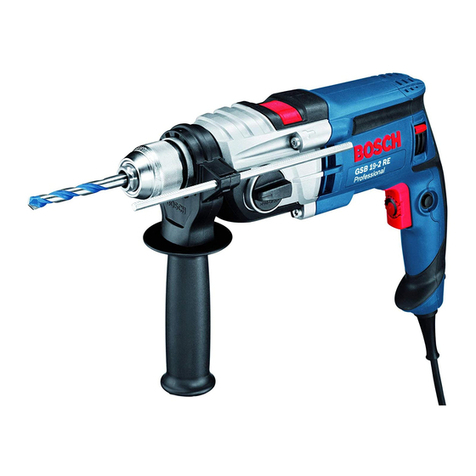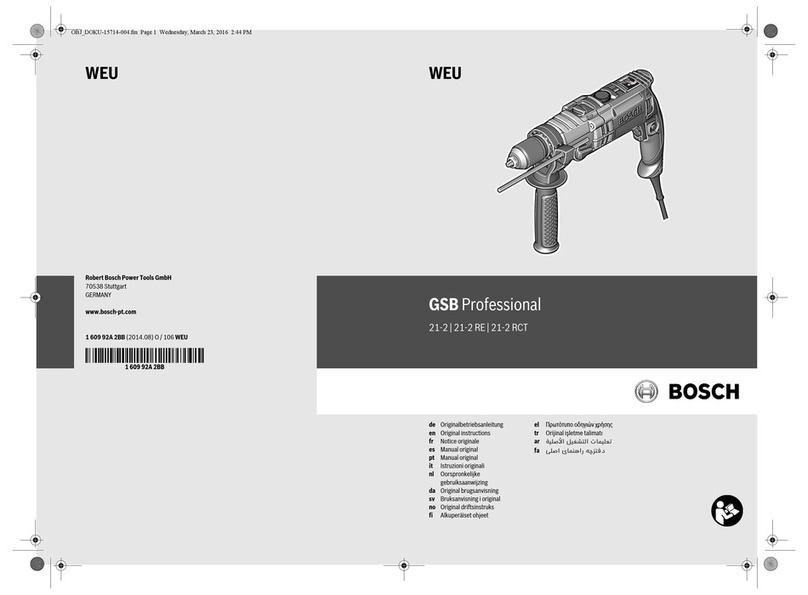
4
en
e)
Do not overreach. Keep proper footing and
balance at all times.
This enables better
control of the power tool in unexpected
situations.
f)
Dress properly. Do not wear loose clothing
or jewelry. Keep your hair, clothing and
gloves away from moving parts.
Loose
clothes, jewelry or long hair can be caught
in moving parts.
g)
If devices are provided for the connection of
dust extraction and collection facilities, en-
sure these are connected and properly
used.
Use of these devices can reduce
dust-related hazards.
4) Power tool use and care
a)
Do not force the power tool. Use the correct
power tool for your application.
The cor-
rect power tool will do the job better and
safer at the rate for which it was designed.
b)
Do not use the power tool if the switch does
not turn it on and off.
Any power tool that
cannot be controlled with the switch is
dangerous and must be repaired.
c)
Disconnect the plug from the power source
and/or the battery pack from the power tool
before making any adjustments, changing
accessories, or storing power tools.
Such
preventive safety measures reduce the risk
of starting the power tool accidentally.
d)
Store idle power tools out of the reach of
children and do not allow persons unfamil-
iar with the power tool or these instructions
to operate the power tool.
Power tools are
dangerous in the hands of untrained users.
e)
Maintain power tools. Check for misalign-
ment or binding of moving parts, breakage
of parts and any other condition that may
affect the power tools operation. If dam-
aged, have the power tool repaired before
use.
Many accidents are caused by poorly
maintained power tools.
f)
Keep cutting tools sharp and clean.
Prop-
erly maintained cutting tools with sharp
cutting edges are less likely to bind and are
easier to control.
g)
Use the power tool, accessories and tool
bits etc., in accordance with these instruc-
tions and in the manner intended for the
particular type of power tool, taking into
account the working conditions and the
work to be performed.
Use of the power
tool for operations different from those in-
tended could result in a hazardous situation.
5) Service
a)
Have your power tool serviced by a quali-
fied repair person using only identical re-
placement parts.
This will ensure that the
safety of the power tool is maintained.
Special safety instructions.
Wear personal protective equipment. Depen-
ding on the application, use a face shield,
safety goggles or safety glasses. Wear ear pro-
tection.
The safety glasses must be capable of
protecting against flying particles generated
by the various different operations. Prolon-
ged exposure to high intensity noise may
cause loss of hearing.
Secure the power tool with the clamping strap
supplied if there is danger of it falling, espe-
cially for work carried out at a height, on verti-
cal construction elements or above the head.
If
there is a power cut, or the mains plug is
pulled out, the magnetic holding power is not
maintained.
When working overhead or on vertical sur-
faces, the coolant container must not be used.
Use a coolant spray instead.
Liquids penetra-
ting your electric power tool may cause elec-
tric shock.
Avoid touching the drilled core that is automati-
cally ejected by the centering pin when the
working procedure is finished.
Contact with
the core when it is hot, or if it falls, can cause
personal injuries.
Operate the power tool only from earthing con-
tact sockets that comply with the specificati-
ons. Do not use any connection cables that are
damaged; use extension cables with an eart-
hing contact that are checked at regular inter-
vals.
A earth conductor without continuity
can cause an electric shock.
3 41 01 011 21 0.book Seite 4 Montag, 8. Februar 2010 11:51 11
